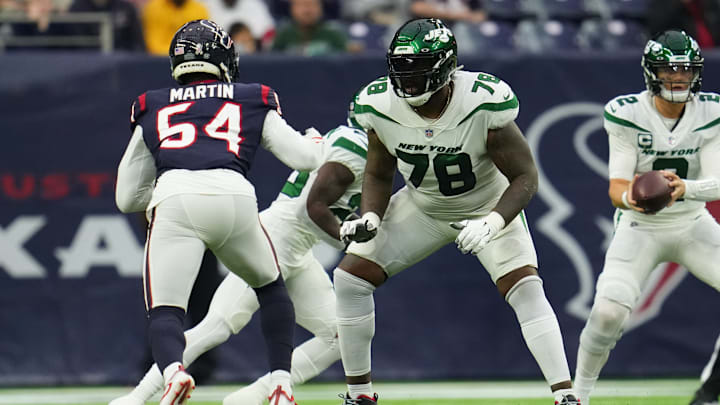The moves a team makes in the offseason are signposts for the team's direction in the coming season. For the NY Jets, it was already known that this was going to be an all-in year. Entering the offseason there were clear needs that have been addressed, but the way in which they were addressed tells us about changes in direction the team is making.
In order to drive success, teams constantly need to evolve. This means not only acquiring the best possible players for a team's particular timeline but also adjusting scheme and strategy to maximize and accentuate that talent.
It also means putting plans in place to minimize potential weaknesses while also taking advantage of league-wide trends. That can mean finding players who are undervalued, schematic tendencies that are underutilized, or even strategically planning to stop the en-vogue movements in the league today.
For the Jets, there are three distinctive things that we've learned based on the moves they've made this offseason.
1. The NY Jets are transitioning to a power-run scheme
For those who don't know, there are two primary rushing schemes in play in the NFL which are called zone and gap (sometimes referred to as power or man). Over the last several years, the Jets have run a zone scheme first under former offensive coordinator Mike LaFleur and then under current offensive coordinator Nathaniel Hackett.
The zone scheme, which has become wildly popular under the Shanahan proteges proliferating the league today features athletic offensive linemen who block any defender that comes into a specific area rather than a specific player or gap. It also features speedier running backs who can read those blocks and cut upfield typically outside of the tackle where there is more space.
The gap scheme is what was employed during the Rex Ryan "Ground and Pound" years. It features man-based assignments to clear specific gaps and relies on offensive linemen who have superior strength as well as bigger, more powerful backs who are willing to take on would-be tacklers one-on-one.
Given the Jets needing three new starters across the offensive line entering the offseason, the switch in scheme from zone to gap made sense. All three additions; Tyron Smith, John Simpson, and Morgan Moses have played in gap schemes for the majority of their careers. Moses and Simpson specifically are better in such a scheme.
The second part is what the Jets have done at the running back position. After employing smaller, shiftier backs like the now departed Michael Carter and last year's fifth-round pick Israel Abanikanda, the Jets drafted two bigger power backs in the 235-pound Braelon Allen and 220-pound Isaiah Davis.
Most importantly, starter Breece Hall is an uber-talented scheme-versatile player who has both the speed to play in a zone scheme while also having the size and strength at 220 pounds to play in a gap scheme.
The Jets clearly plan on pounding the rock this year and wearing out opponents with a power running game, especially after jumping out to an early lead. With an elite defense and an aging QB coming off a serious injury, this seems like a very well-thought-out plan.
